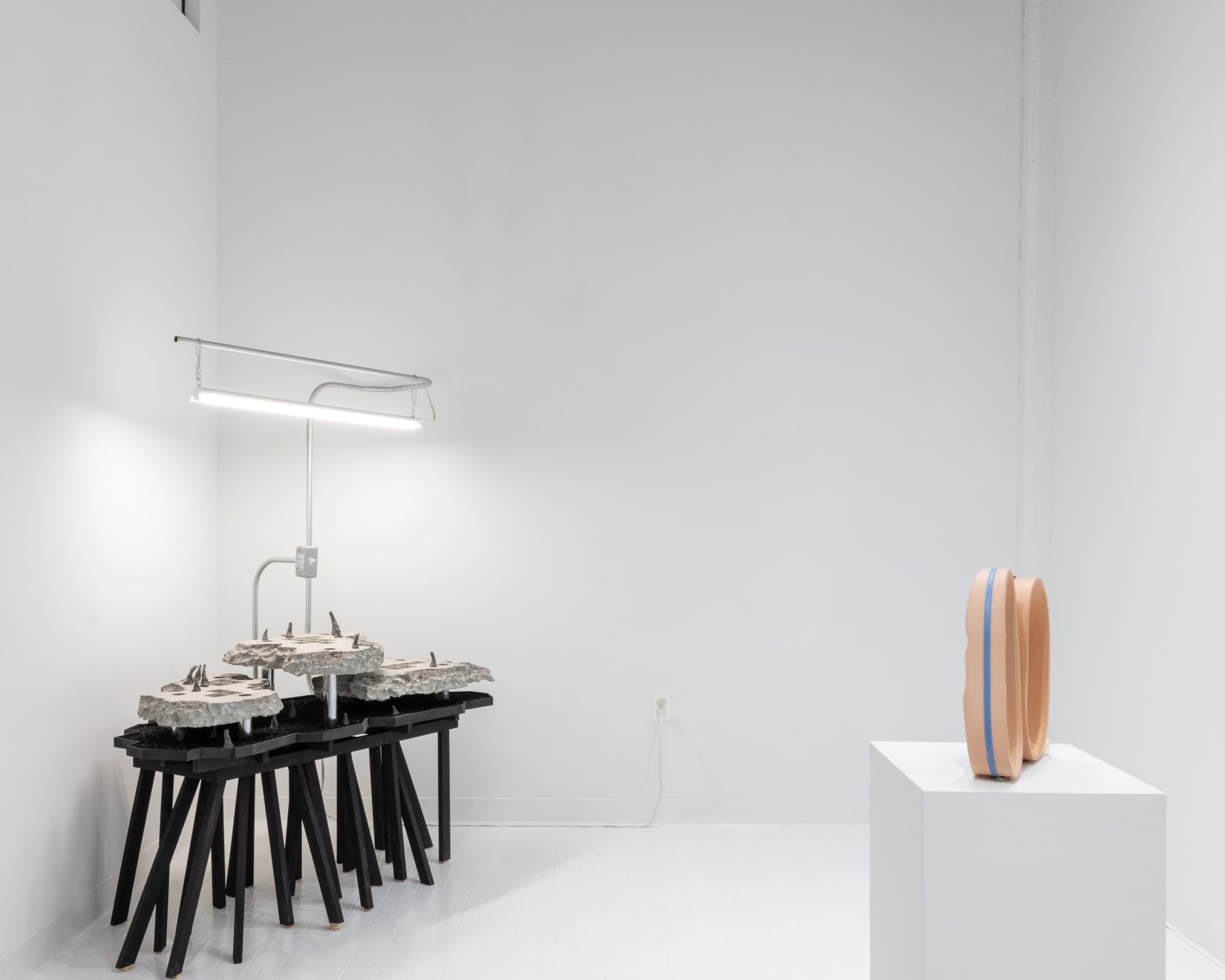Open a larger version of the following image in a popup:
 Installation view: Paul Mok + Mar Ramon Soriano, Yi Gallery, NY 2023
Installation view: Paul Mok + Mar Ramon Soriano, Yi Gallery, NY 2023
 Installation view: Paul Mok + Mar Ramon Soriano, Yi Gallery, NY 2023
Installation view: Paul Mok + Mar Ramon Soriano, Yi Gallery, NY 2023
Paul Mok
Flip, 2020
Concrete, wood, paint, charcoal, clay, metal, electrical conduit, fluorescent light, light switch, wire
46 x 30 x 48 in
116.8 x 76.2 x 121.9 cm
116.8 x 76.2 x 121.9 cm
PM0003
Copyright The Artist
Further images
-
(View a larger image of thumbnail 1
)

-
(View a larger image of thumbnail 2
)

-
(View a larger image of thumbnail 3
)

-
(View a larger image of thumbnail 4
)

-
(View a larger image of thumbnail 5
)

-
(View a larger image of thumbnail 6
)

-
(View a larger image of thumbnail 7
)

-
(View a larger image of thumbnail 8
)

-
(View a larger image of thumbnail 9
)

-
(View a larger image of thumbnail 10
)

-
(View a larger image of thumbnail 11
)

-
(View a larger image of thumbnail 12
)

-
(View a larger image of thumbnail 13
)

Drawn to common building elements, such as electrical conduits and outlets, Paul Mok composes an entire installation, Flip (2020 - 2023), surrounding a single light switch, which takes center stage....
Drawn to common building elements, such as electrical conduits and outlets, Paul Mok composes an entire installation, Flip (2020 - 2023), surrounding a single light switch, which takes center stage. Every other element is built to support its existence: an elaborate and layered landscape made out of poured concrete and an intricate wooden base, with miniature clay figures dotted throughout the meticulously constructed scene. Front and center, in its essential mundanity and synthetic grandiosity, the switch has been transformed into something with authority. Tracing the use of concrete in his work, Mok recalls his experience in Hiroshima: “I visited the Hiroshima Peace Memorial in 2017. It was originally an industrial hall, and it was one of the very few buildings that remained standing after the bombing (because it was built out of concrete, steel and bricks, not wood). They kept it in its ruined state to memorialize the atrocities humans have committed against one another. What moved me were the plants. They were growing out of the cracks, covering the floor. They were flourishing.”
Through a proliferation of textures and complex constellations of object, visual artist, designer and architect Paul Mok (b. 1990, Hong Kong) embeds his nuanced aesthetic language into the surfaces of industrial materials and extends into the psychological realm—dismantling material hierarchy and collapsing distinctions among categories. Mok lives and works in Brooklyn, New York. Mok graduated with a bachelor's degree in architectural studies from the University of Hong Kong and a master’s degree in architecture from the Harvard Graduate School of Design. He has exhibited at venues such as New Collectors, Art on Paper at Pier 36, Gallery GAIA and Art Mora Gallery. He has been featured in publications such as Cultured Magazine, Wallpaper, Whitehot Magazine, FAD, Art Spiel, Pattern, and Cultbyte. In 2022, Mok was named one of the Young Architects by Cultured Magazine.
Through a proliferation of textures and complex constellations of object, visual artist, designer and architect Paul Mok (b. 1990, Hong Kong) embeds his nuanced aesthetic language into the surfaces of industrial materials and extends into the psychological realm—dismantling material hierarchy and collapsing distinctions among categories. Mok lives and works in Brooklyn, New York. Mok graduated with a bachelor's degree in architectural studies from the University of Hong Kong and a master’s degree in architecture from the Harvard Graduate School of Design. He has exhibited at venues such as New Collectors, Art on Paper at Pier 36, Gallery GAIA and Art Mora Gallery. He has been featured in publications such as Cultured Magazine, Wallpaper, Whitehot Magazine, FAD, Art Spiel, Pattern, and Cultbyte. In 2022, Mok was named one of the Young Architects by Cultured Magazine.
4
de
4











